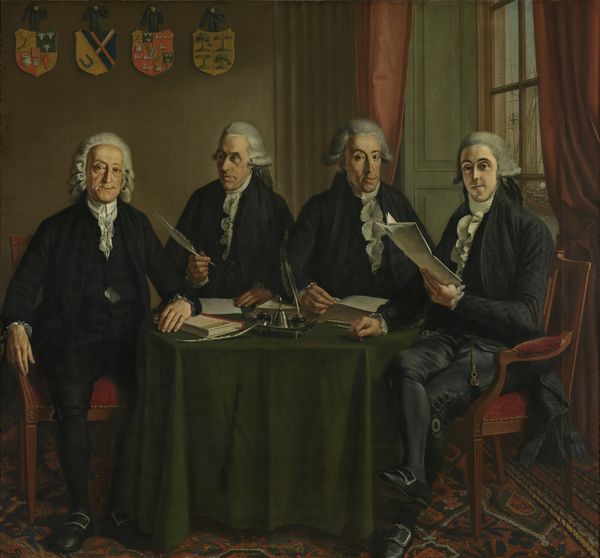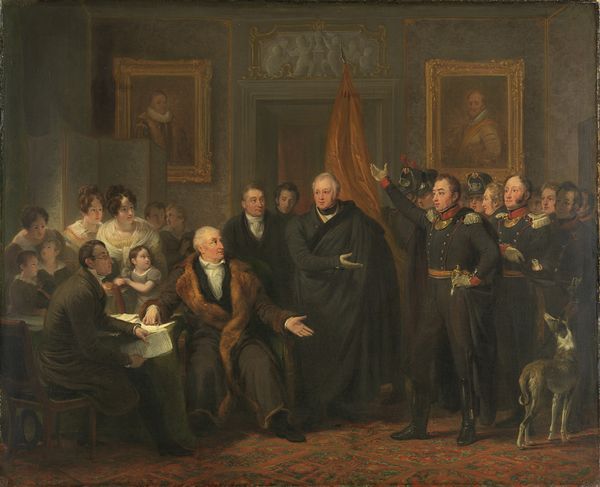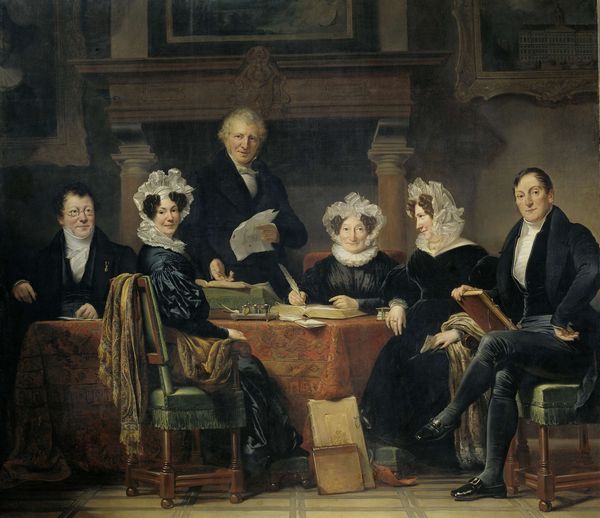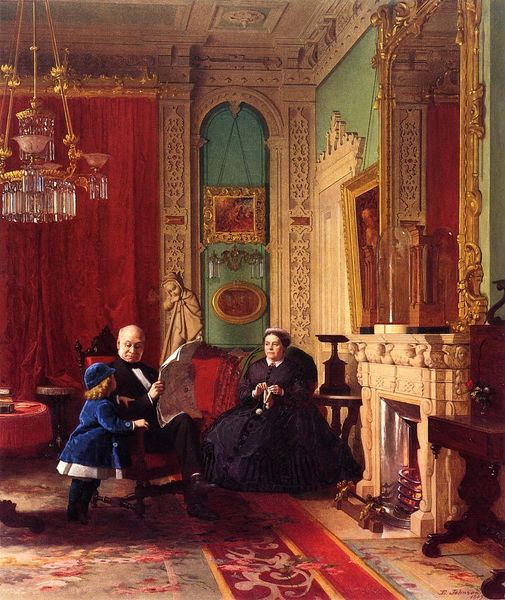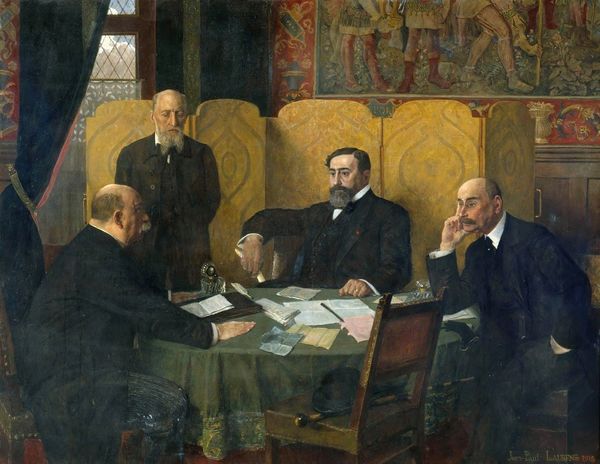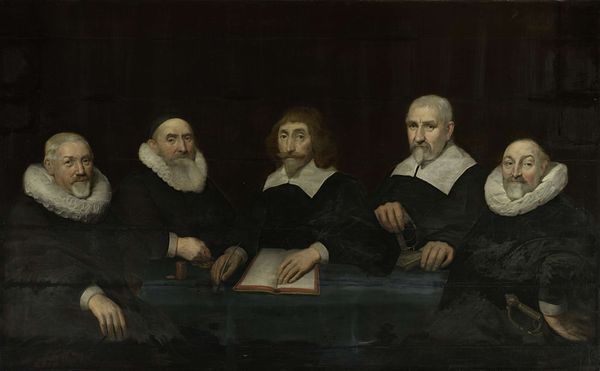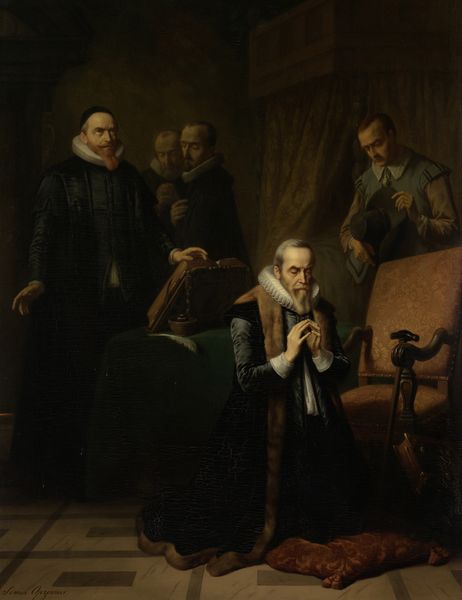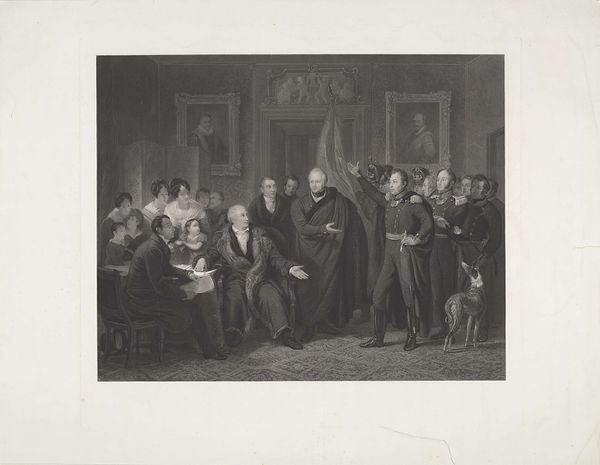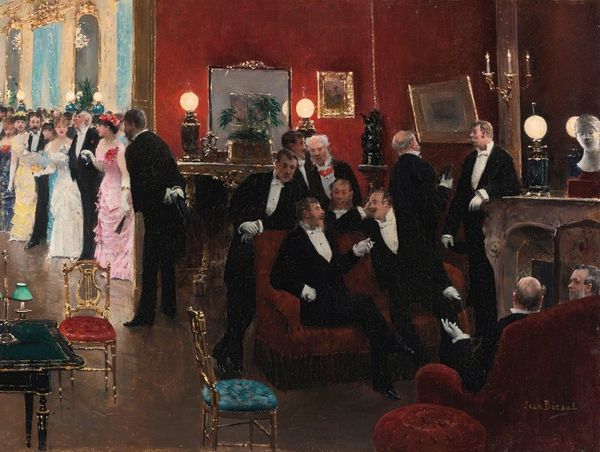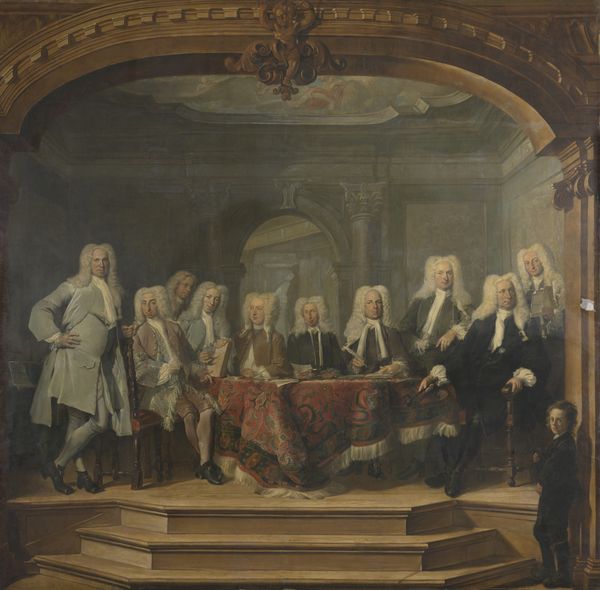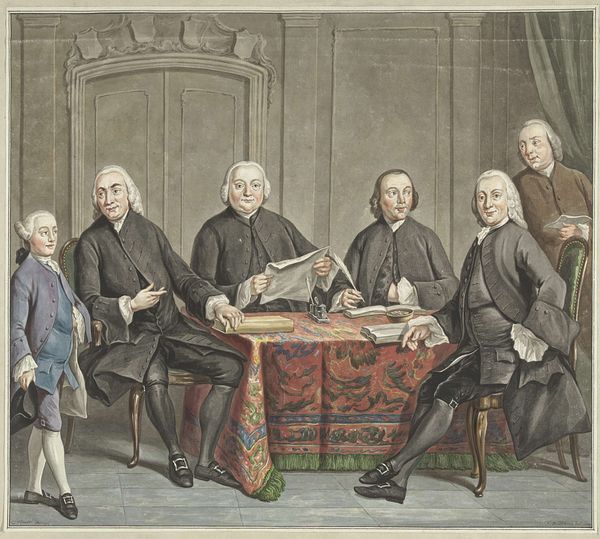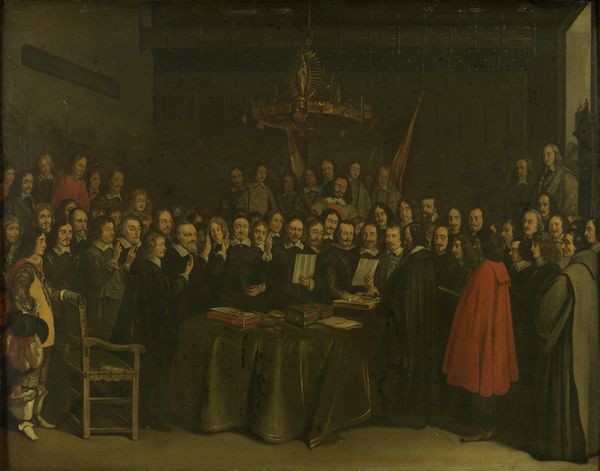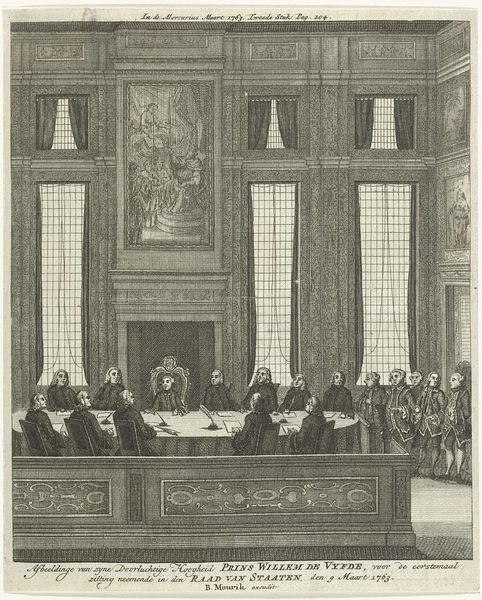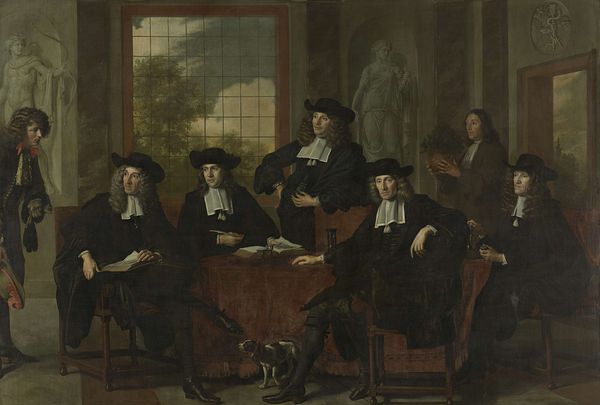
Professors Welch, Halsted, Osler and Kelly (also known as The Four Doctors) 1906
0:00
0:00
painting, impasto
#
portrait
#
painting
#
impasto
#
history-painting
#
academic-art
#
realism
Dimensions: 298.6 x 213.3 cm
Copyright: Public domain
Curator: Here we have John Singer Sargent’s 1906 painting, “The Four Doctors,” a rather imposing group portrait. Editor: It is imposing! Dark and weighty. My first impression is how much impasto Sargent employed—look at the heavy brushstrokes, almost sculptural in places. You can practically feel the weight of those academic robes. Curator: Indeed. It depicts William Welch, William Halsted, William Osler, and Howard Kelly, all key figures in the founding of Johns Hopkins Hospital. Commissioned for the hospital, this work, meant to immortalize these men, had a fraught reception due to inaccuracies regarding Halsted’s position. Editor: Well, let’s think about materiality. Sargent’s masterful use of oil paint, building up texture, lends a gravity to the subject, underscoring their importance, even visually linking them to old masters like Rembrandt. It shows us, also, the artist's labor and what sort of handcraft or production went into play in Academic circles at this time. It’s not just likeness, it’s about crafting an image, an identity. What was Hopkins trying to convey, displaying such art in the hospital? Curator: Johns Hopkins was intentionally modeling itself on European research institutions; acquiring a Sargent portrait helped broadcast this commitment to science. Note how the men are framed: around a large globe, itself symbolic of worldwide aspirations for Hopkins' global reach and modern status. Editor: But it's also interesting, isn’t it? The contrast between the almost reverential treatment, the classical style in Sargent’s material application and these icons of modern medicine. Look at the detail in those fabrics, how they were manufactured, purchased, treated… The heavy fabrics themselves speak of a certain socioeconomic standing. The visual effect isn't clinical but creates something rather luxurious, wouldn’t you say? Curator: Exactly. It speaks volumes about the socio-political climate where medical breakthroughs are occurring within privileged and heavily institutional structures. Art functions here as both a record of power dynamics and, hopefully, an inspiration for further contributions to medical advancement. Editor: I'm particularly drawn to thinking about the cultural impact, the almost manufactured importance embedded into paintings like these. Fascinating! Curator: And I am still processing Sargent’s capacity for rendering the intangible gravity of influence.
Comments
No comments
Be the first to comment and join the conversation on the ultimate creative platform.
